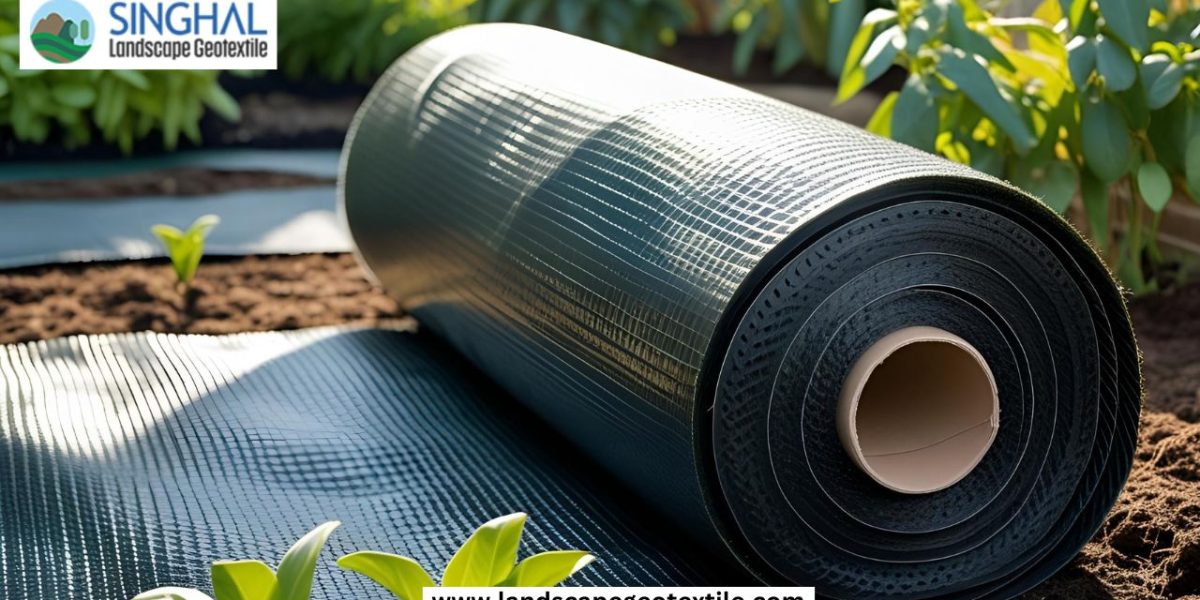Maintaining a healthy garden for aesthetics and food production can be a valuable experience, but only if you can keep weeds in chess. Because of this, many gardeners will change as a sustainable, low maintenance solution for weed barriers. Available in a variety of classes and textures depending on your garden or landscape needs. For example, breathable, durable fabrics are perfect for beds, but heavy serviced materials work better than Weed barriers under rocks in sidewalks and decorative rooms.
In this article, we will explore how to effectively use weeds in vegetable garden projects, why this is the advantage of organic garden work, and how it will develop in other regions such as cheese and stones. Whether you are growing heirloom tomatoes or designing rock paths, the right weed barrier – barriers can make your work easier and clean out the results.
What is the weed barrier?
Weed barrier tissue, also known as landscape organization, is a material placed above ground to prevent weed growth and simultaneously pass through water and air. In contrast to plastic films that suffocate soil, landscape structures are usually made up of woven or non-woven polypropylene or polyester, which were naturally developed to control weeds in a natural way.
When you’re using weed barrier fabric for organic vegetable gardening projects, you’ll likely wonder – is this really organic? And the simple answer is, while most weed barrier fabrics made from traditional polypropylene are not biodegradable, many manufacturers are making eco-friendly alternatives! These alternatives would be considered organic, sustainable or some type of a biodegradable material that either decays over time or otherwise uses natural fibres such as burlap or jute.
Why use weed barriers in vegetable gardens?
When growing food gardens, you know how important it is to maintain clean, weed-free rows.
- Weed Control: Maintains unwanted growth without constant weeds or herbicides.
- Bed Moisture Retention: Reduces evaporation and helps plants stay hydrated.
- Improve plant health: Less competition increases plant nutrients.
- Time savings: Spend more time on harvesting and reduce weeding time.
For gardeners who are committed to sustainability, the version is specially made as a Weed barrier for organic vegetable garden setups. These materials can be biodegradable or chemicals, which drain them into the soil and match the principles of organic farming.
Organic vegetable garden weed barrier: Is it safe?
Using weed barriers in organic vegetable garden projects causes common problems. Is it really biological? While traditional polypropylene materials are not biodegradable, many manufacturers now offer environmentally friendly alternatives that will collapse over time, or are made from natural fibers such as sukka linen and jute.
If you’re a gardener who values the environmentally friendly kind of gardening, choose the weed barrier fabric for organic vegetable gardening projects that is consistent with those values. If you’re a gardener who casually gardens without thinking about the impacts on our planet, Weed barrier fabric for vegetable gardening rows multiplies the reduction of weeding times. If you’re a gardener who’s taking on serious hardscape and time-consuming projects, there’s nothing like using a weed barrier fabric underneath rock to achieve a sharp-looking gravel/garden stone area year after year.
Weed Barrier Beneath the Rock: High Performance Applications
Apart from the garden beds, the hard cap scenery is very convenient. Using weed barriers under rocks is one of the best ways to maintain decent, low maintenance roads and decorative areas.
Without barriers, weeds inevitably appear between the stones, which makes their beautiful gravel paths look cluttered. The fabric acts as a shield and blocks weeds, but the rainwater flows naturally. Use top-class UV resistant fabrics that can withstand the weight of stones and pedestrians for this application.
If properly installed, weed barriers – fabrics can take years under rocks, reducing the need for chemical weeds in the landscape.
How to install weed barrier tissue for maximum effect
This is a simple step-by-step instruction to set up a landscape in your garden.
- Prepare the floor: Remove all existing weeds, grasses and debris. Use the Chargent floor level to apply compost or modifications as needed.
- Place the dough: Cut out an X-shaped hole where all plants go to the weed barrier in the botanical garden.
- Secure the edges: Use landscape brackets or pens to keep the fabric in place, especially around the edges and seams.
- Cover with mulch or straw: Add a layer of organic mulch to protect your fabric and improve the appearance.
- Water and Maintenance: As usual, most fabrics are permeable and allow roots to reach.
By following this method, weed barrier-barrier-fabric for organic vegetable gardens is effective and sustainable.
Summary
Weed Barriers are a powerful tool in gardener toolkits that provide clean and efficient weed control while minimizing environmental impact. Whether you simplify your edible garden or manage your decorative paths, the right products can save you time with each season.
If you’re focusing on eco-friendly practices, choose Wehrraut Barrier Fabric for an organic vegetable garden that suits your values. In traditional gardening, weed barriers in the plant garden row can significantly reduce the leaves of weed war. And, with a hard time, there is a weed barrier under the rock, and nothing makes.
FAQ
F1: Can we use weed barriers in increased beds?
Yes, weed barriers in plant-based garden beds – especially increase and help prevent weeds from growing from the ground.
F2: Is organic vegetable weed barrier fabric safe?
It depends on the material. If you are focusing on organic growth, choose the organic vegetable garden weed barrier that is free of biodegradable or certified chemicals.
F3: How long does the weed barrier take under a rock?
High quality weed barriers under rocks can take 5-10 years or more depending on UV exposure and pedestrians. For protection, always cover with at least 2 inches of gravel.
F4: Who is the largest manufacturer of weed barriers?
Singhal landscapegeotextile is the largest amount of Weed mats. With proper installation and use multi, most fabrics will continue into some growth periods. Check tears each year or carry sections as needed.












